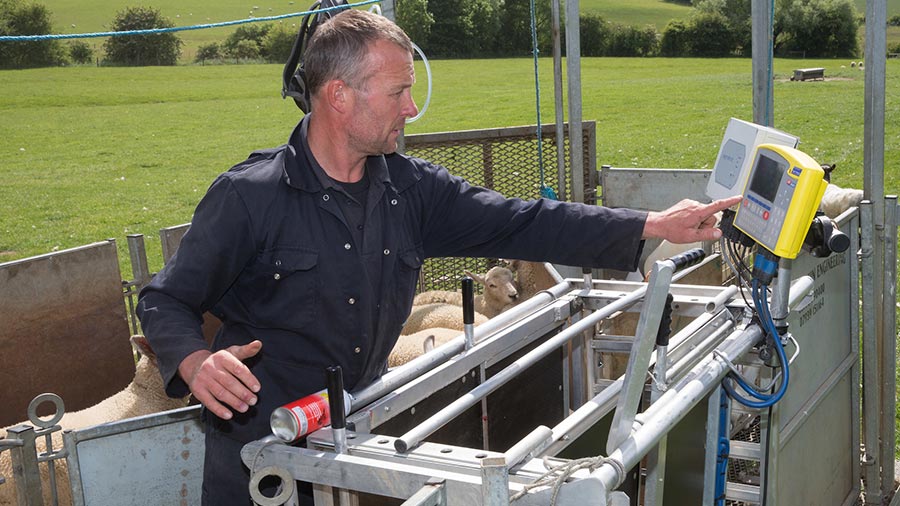Why and when farmers should weigh sheep
 © Tim Scrivener
© Tim Scrivener There is a whole heap of reasons to weigh sheep regularly. In fact, the benefits are four-fold: for health, nutrition, management, and genetic purposes, says Peter Stoker, marketing manager from Datamars.
Below, Peter explains why weighing provides invaluable information for all sheep farms.
See also: How to work out ewe efficiency and what it can tell you
1. Health
When animals are being treated for worms, for example, knowing the weight of the animal means it can be dosed accurately.
“There is no use in guessing. If you under-treat, that will cause problems with resistance build-up and products not working properly,” says Peter.
Furthermore, weighing allows selective targeting of animals by only treating ones that fall behind weight-gain targets.
Moredun has developed a Happy Factor treatment threshold, which can be used to determine if targeted selective treatment (TST) is needed.
Results from Moredun’s trial work showed that lambs in the TST group used half the wormer compared with those routinely wormed.
This practice also has the benefit of diluting the population of resistant worms.
Weighing also gives an insight into health when used alongside body condition scoring.
2. Nutrition
The earlier a lamb is tagged, the earlier its weight can be recorded, says Peter. Ideally, lambs should be tagged at birth.
Early recording of lamb weights is beneficial to record ewe performance as well as lamb performance, he adds.
“In the first four weeks, lambs are getting milk from ewes, and that can be a good assessment of how well you have fed that ewe.
“At eight weeks, lambs are starting to get more nutrition from grass, so keeping grass in front of them is important. Weighing can tell you if there’s not enough.”
Cobalt aids digestion in the gut, so lack of this can hamper growth rates, too.
Reducing days to slaughter is a win-win for efficiency, lowering the farm’s environmental footprint. It also frees up grass so ewes can get priority grazing ahead of tupping, he says.
3&4. Genetics and management
Capturing weight data allows differences between mobs of lambs by different terminal sires to be tracked.
Taking a weaning weight can also reveal how ewes are performing – the target should be for commercial ewes to wean 50% of their weight by eight weeks, according to SAC Consulting.
“Knowing your growth rates helps you to make informed management decisions,” adds Peter.
How often should you weigh?
The worm life cycle is 21 days. To use data as a management tool to inform weighing, sheep need to be weighed every three weeks to detect adult worms.
However, weighing as often as you can is a good place to start, he says.
“It is down to the farm and how good their handling system is. The more often you do it, the easier you will find the process, because sheep do need to get used to it.”
Peter Stoker was speaking at the National Sheep Association’s inaugural sheep farmers’ conference at the National Conference Centre, Solihull, on 25 October.
